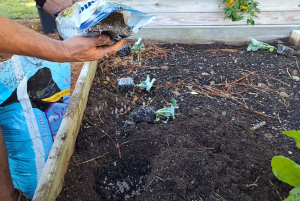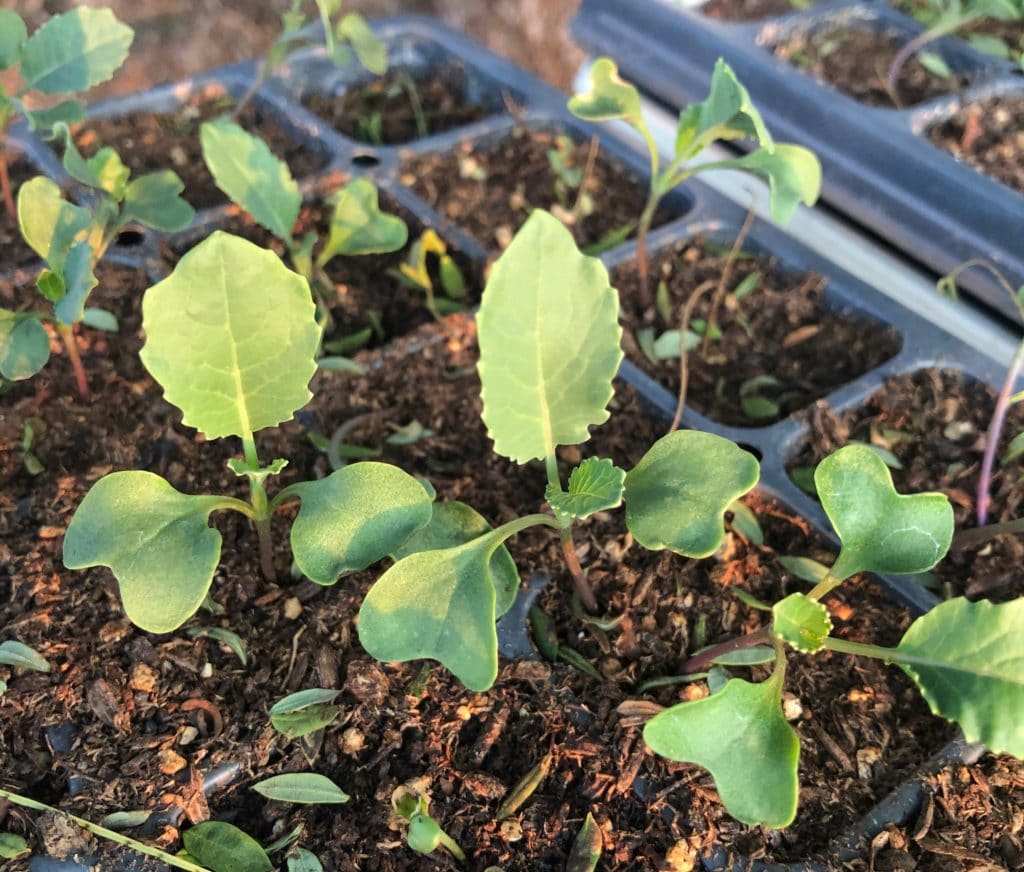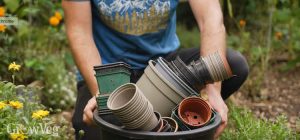Grow broccoli by starting seeds indoors and transplanting seedlings to well-draining, fertile soil after 4-6 weeks. Water regularly and ensure full sunlight for optimal growth.
Broccoli, a cool-season crop rich in nutrients, thrives when given the proper care. To cultivate robust broccoli plants, begin by selecting a sunny spot with at least six hours of sunlight daily. Early spring or late summer is the ideal time to plant, aligning with temperate weather that broccoli favors.
Good soil preparation is crucial; enriching the soil with compost or well-rotted manure provides the necessary nutrients. Consistent watering, maintaining soil moisture, and incorporating organic mulch can prevent weeds and keep the soil temperature stable.
Regular monitoring for pests like cabbage loopers and aphids will safeguard your plants. Adequate spacing, about 18 inches apart, allows room for growth, leading to a bountiful harvest of this green vegetable rich in vitamins K and C.

Selecting The Right Broccoli Variety
Growing broccoli can be rewarding and delicious. Yet, knowing where to start is crucial. Variety choice makes a huge difference.
You must consider your climate and preferences when choosing broccoli seeds. Some types withstand cold better. Others mature faster. Think about what you need for your garden. Let’s explore.
Adapting To Your Climate
Different broccoli varieties thrive in varied climates. Your location’s temperature may affect your choice.
- Cool climates: Look for ‘Calabrese’ or ‘Waltham 29’
- Warm areas: ‘Arcadia’ or ‘Green Magic’ might do well
Check each type’s optimal growing conditions. This ensures healthy plants and bountiful harvests.
Hybrid Vs. Heirloom Varieties
Broccoli comes in heirloom and hybrid types. Each offers unique benefits.
| Hybrid | Heirloom |
|---|---|
| Better disease resistance | Traditional flavors |
| Faster growth | Save seeds for reuse |
| Consistent size and shape | Historical varieties |
Choose hybrid for ease and predictability. opt for heirloom to explore diverse textures and tastes.

Credit: joegardener.com
Preparing The Garden Soil
For broccoli to flourish, the right soil conditions are crucial. Healthy soil leads to healthy plants. Before planting, understanding soil composition and pH, plus the necessary nutrients, ensures your broccoli gets the best start. Let’s dive into preparing the perfect bed for your broccoli plants.
Soil Composition And Ph
Broccoli thrives in soil that is well-draining and rich in organic matter. Aim for a loamy soil that retains moisture without becoming waterlogged. Proper pH levels are vital for nutrient uptake.
Broccoli prefers a pH between 6.0 and 7.0. Test your soil using a kit from your local garden center.
Adjust the pH if it falls outside the ideal range. Use lime to raise the pH or sulfur to lower it. Mixing in organic compost can also help balance the pH while improving soil structure.

Nutrient Requirements And Amendments
Nutrients are the building blocks of plant health. Broccoli requires nitrogen, phosphorus, and potassium, commonly referred to as N-P-K. Here’s what to do:
- Add compost: Enriches soil and provides nutrients.
- Use a balanced fertilizer: Look for one labeled as 10-10-10.
- Include bone meal or rock phosphate: Boosts phosphorus for strong roots.
- Apply potassium sulfate: Increases potassium for growth and health.
Always follow the instructions on fertilizer packages. Too much can harm your broccoli plants.
| Nutrient | Source | Amount |
|---|---|---|
| Nitrogen (N) | Compost, Fish Emulsion | 1/4 cup per plant |
| Phosphorus (P) | Bone Meal, Rock Phosphate | 2 tablespoons per plant |
| Potassium (K) | Potassium Sulfate | 1 tablespoon per plant |
Sowing Strategies For Broccoli Seeds
Embarking on the broccoli-growing journey starts with seeds. The right sowing strategy is a game-changer. Understanding whether to start indoors or sow directly can affect your harvest. Mastering the timing is key to optimal growth. Let’s dig into the specifics to ensure your broccoli plants thrive from the get-go!
Indoor Start Vs. Direct Sowing
Starting seeds indoors gives you a head start. It allows you to control conditions closely. Here are the steps:
- Use seed trays filled with starter mix.
- Plant seeds ¼ inch deep.
- Keep the soil moist and warm.
- Once seedlings sprout, ensure they get plenty of light.
Direct sowing is planting directly in the garden. Follow these tips:
- Choose a sunny spot with well-drained soil.
- Sow seeds ½ inch deep in rows.
- Space seeds 3 inches apart.
- Water regularly to keep the soil moist.
Timing For Optimal Growth
Broccoli loves cool weather. Perfect timing can produce a hearty crop. Begin indoors or outdoors depending on your zone.
| Zone | Indoor Start | Direct Sow |
|---|---|---|
| Cooler Climates | 6-8 weeks before last frost | 2-3 weeks before last frost |
| Warmer Climates | Midsummer for fall harvest | Not recommended |
Use a calendar to count back from your area’s last frost date. Mark your sowing day. Stay vigilant about frost forecasts to protect your seedlings.

Credit: m.youtube.com
Transplanting Young Broccoli Plants
Transplanting Young Broccoli Plants is a critical step in the garden. It sets the stage for a harvest full of lush, green heads of broccoli. Let’s dive into the techniques that ensure your plants prosper when moving from their nursery environment to your garden bed.
Proper Transplanting Techniques
Follow these steps for successful broccoli plant transplantation:
- Select a cloudy day or late afternoon to minimize transplant shock.
- Prepare the soil by adding compost to boost nutrients.
- Dig holes larger than the seedling’s root ball.
- Place the plants 18 inches apart to give them ample room to grow.
- Carefully remove the plant from its pot, disturbing the roots as little as possible.
- Settle the plant in the hole at the same depth it was growing before.
- Refill the hole with soil, gently pressing down around the base of the plant.
- Water immediately to help roots establish contact with the new soil.
Hardening Off Seedlings
Before transplanting, it’s crucial to harden off the seedlings. This process prepares them for outdoor conditions.
- Begin 1-2 weeks before planting out.
- Place seedlings outside in a shaded area for a few hours daily.
- Gradually increase their time outdoors and exposure to sun.
- Reduce watering a bit to toughen up the plants.
- Ensure they’re sheltered from strong winds and heavy rain.
Proper hardening off reduces stress and improves your broccoli’s growth potential. With these guidelines, your young broccoli plants will thrive in their new home.
Mastering The Watering Schedule
Healthy broccoli plants crave the right amount of water. It is like a good balance in life. Too little or too much water causes problems. Let’s dive into how to give your broccoli just what it needs to thrive.
Irrigation Frequency And Quantity
Broccoli plants do best with regular, consistent watering. During growth, they need water at least once or twice a week. The key is to keep the soil moist but not soggy. Each watering session should soak the soil to a depth of 6 inches.
This encourages deep root growth. Use a soaker hose or drip irrigation system for the best results. These systems save water and direct it where needed.
Signs Of Overwatering Or Underwatering
Broccoli plants tell you if they get too much or too little water. Look for these clues:
- Yellowing leaves suggest too much water.
- Wilting can mean not enough water or too much.
- Slow growth or small heads show the plant is stressed by water issues.
To fix these problems, adjust your watering schedule. Stick your finger in the soil. If the top inch is dry, it’s time to water. If it’s soggy, give the plant a break. Remember, broccoli prefers cooler weather, so in heat, they might need extra care.
Pest Management And Protection
Healthy broccoli plants can get attacked by pests. Knowing about pests helps keep your broccoli safe. Read on how to stop these little bugs without harming your plants.
Common Broccoli Pests
Broccoli has some common enemies in the garden. Watch out for these bugs:
- Cabbage Worms: Green caterpillars that eat leaves.
- Aphids: Tiny bugs that suck plant juices.
- Flea Beetles: Small, jumping beetles that chew holes in leaves.
- Cutworms: Caterpillars that cut plants at the base.
Organic Control Measures
Keep pests away with safe, organic methods:
- Row Covers: Light fabric over plants stops bugs.
- Hand Picking: Remove large caterpillars by hand.
- Beneficial Insects: Ladybugs eat aphids. Release them in your garden.
- Neem Oil: Natural spray that stops pests.
- Diatomaceous Earth: Powder that cuts and dehydrates bugs.
| Pest | Signs | Organic Solution |
|---|---|---|
| Cabbage Worm | Eaten leaves, small green caterpillars | Row covers, hand picking |
| Aphids | Yellow, curled leaves with bugs underneath | Ladybugs, neem oil |
| Flea Beetles | Holes in leaves, tiny black beetles | Row covers, diatomaceous earth |
| Cutworms | Chopped stems, missing seedlings | Collars around seedling base, hand picking |
Fertilization For Healthy Broccoli
Fertilizing your broccoli plants is crucial for their growth. Broccoli requires nutrient-rich soil to develop those tasty heads. Let’s dive into how to nourish them for the best harvest possible.
Choosing The Right Fertilizer
Broccoli plants thrive on a balanced diet of essential nutrients. A balanced 10-10-10 fertilizer works wonders. It provides an equal ratio of nitrogen, phosphorus, and potassium. These nutrients promote leafy growth, root development, and overall plant health.
- Nitrogen: for leafy growth.
- Phosphorus: for strong roots.
- Potassium: for overall vigor.
Application Timing And Methods
For optimal growth, fertilization should align with key growth stages. Start with a dose when you plant your broccoli seedlings. It jump-starts their growth. Then, apply a second round three to four weeks later to support the developing heads.
| Growth Stage | Fertilization Time | Method |
|---|---|---|
| Initial Planting | At planting | Work the fertilizer into the soil. |
| Development Stage | 3-4 weeks after planting | Side-dress near the plant’s base. |
Use a handheld spreader or a trowel to distribute the fertilizer evenly. Always water the soil after applying any type of fertilizer to help it soak in.
Harvesting And Storing Broccoli
Congratulations, your broccoli plants have matured! Now, harvesting and storing your greens properly ensures maximum flavor and longevity. Broccoli presents a bounty you can enjoy in the moment and save for future meals. Follow these guidelines for the best results.
Identifying Peak Harvest Time
Spot peak harvest time by observing your broccoli’s features. Look for firm, tight buds and a deep, vibrant color. The buds should be before flowering. If you see yellow petals, harvest immediately. This is the prime time for cutting to ensure crisp, tasty broccoli.
Proper Storage Techniques
After harvesting, proper storage is key to keeping your broccoli fresh. Begin by submerging the heads in cold water to remove any dirt or insects. Pat them dry gently. Here’s how to store your broccoli:
- Refrigerate: Place broccoli in a loose-fitting plastic bag before refrigerating it. Do not seal the bag; air circulation is important.
- Freeze: For long-term storage, blanch the broccoli florets and stems in boiling water for three minutes. Plunge them into ice water, dry thoroughly, and freeze in airtight bags or containers.
- Cool, dry place: If you plan to use it within a day or two, keeping broccoli in a cool, dark location works well.
Follow these tips, and you’ll enjoy fresh, delicious broccoli whether it’s from the fridge or the freezer.
Frequently Asked Questions
When Is The Best Time To Plant Broccoli?
Broccoli thrives in cool weather, so the best planting times are early spring for a summer harvest or late summer for a fall harvest. Ideal temperatures for growing broccoli are between 65°F and 75°F.
What Soil Conditions Favor Broccoli Growth?
Broccoli prefers well-drained, fertile soil with a pH between 6. 0 and 7. 0. Enriching the soil with compost or well-rotted manure provides the necessary nutrients for optimal growth.
How Much Sunlight Does Broccoli Need?
Broccoli requires full sun, meaning at least 6 to 8 hours of direct sunlight per day. Adequate sunlight is crucial for robust growth and development of the broccoli heads.
Can Broccoli Be Grown In Containers?
Yes, broccoli can be successfully grown in containers. Ensure the pot is at least 12 inches deep and has good drainage. Use high-quality potting soil and provide consistent watering and sunlight.
Conclusion
Growing broccoli can be satisfying and healthy. Remember, soil quality, spacing, and proper watering are key. Protect your plants from pests with vigilance. Harvest at the right time for the best flavor. With these tips, enjoy fresh, homegrown broccoli on your table.





